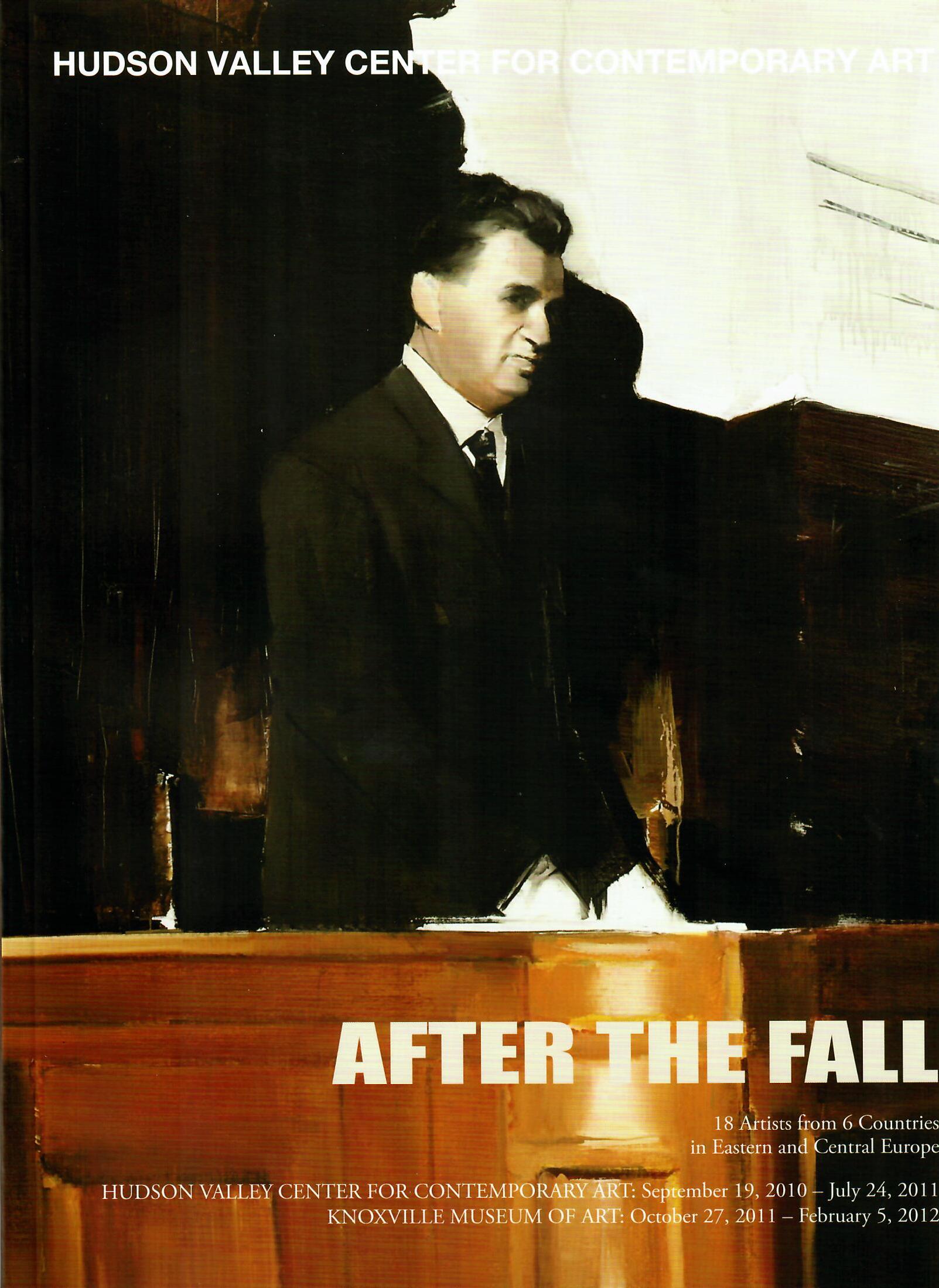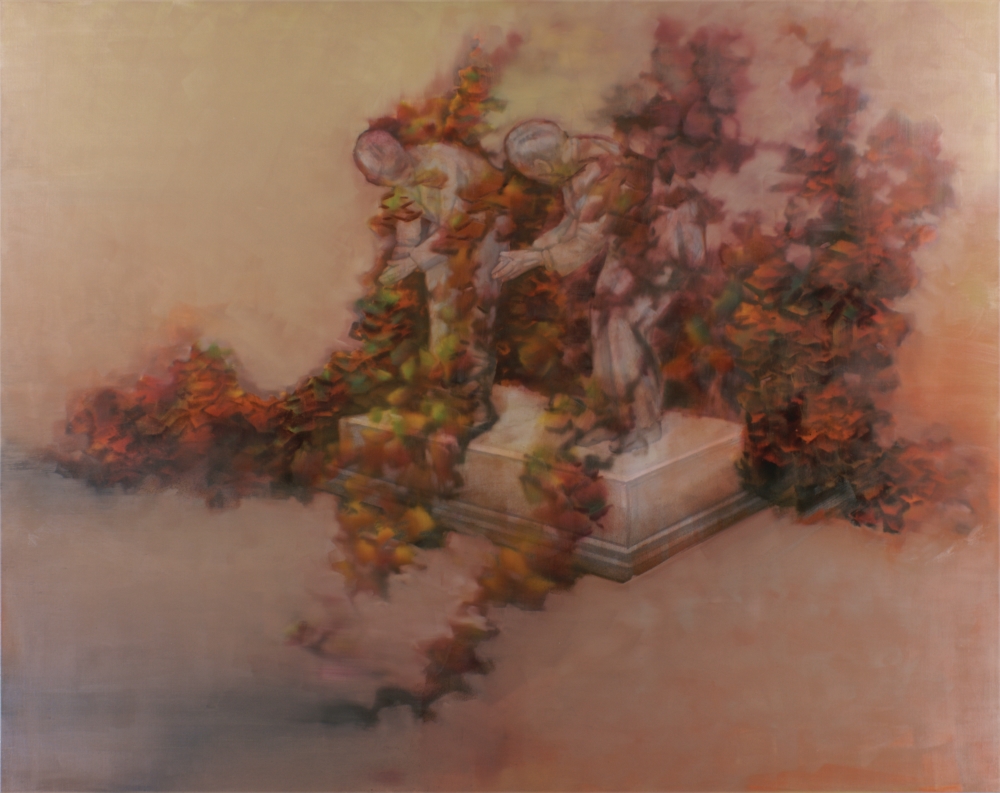AFTER THE FALL
Hudson Valley Center for Contemporary Art
September 19, 2010 – July 21 2011
Knoxville Museum of Art: October 27, 2011 – February 5, 2012
18 Artists from 6 Countries in Eastern and Central Europe

Emerging Artists from East and Central Europe opening reception 3-5 pm
round table discussion with the participating artists 5-7 pm
Some of the most impressive new art today, especially in painting and video, is coming from Eastern and Central Europe's former communist countries. After the Fall attempts to understand how this art differs from art in the West and, more importantly, why artists from this region are making such compelling work at this moment.
Countries included in After the Fallare Croatia (Elvis Krstulovic, Marin Majic, Goran Skofic, Josip Tiric, Zlatan Vehabovic) Czech Republic(Josef Bolf, Daniel Pitin), Hungary(Zsolt Bodoni, Alexander Tinei, Attila Szucs), Latvia (Janis Avotins), Romania (Leonardo Silaghi, Marius Bercea, Adrian Ghenie, Ion Grigorescu, Serban Savu, Ciprian Muresan) and Slovenia(Matija Brumen).
This is a heterogeneous political, social, cultural and religious region, each having evolved differently after the fall of their governmental systems.
For After the Fall,founders of HVCCA, Marc and Livia Straus, visited over 1,500 artists' studios, galleries, art schools, alternative spaces, and museums.
~~~~~~~~~~~~~~~~~~~~~~~~~~~~~~~~~~~~~~~~~~~~~~~~~~~~~~~~~~~
After the Fall is made possible with the generous support of:
ArtsWestchester, White Plains, NY, Romanian Cultural Institute, New York,NY, Czech Center New York, NY and Embassy of the Czech Republic, Washington, D.C., Hungarian Cultural Center, New York, NY and the Consulate General of the Republic of Croatia, New York, NY.
Art of Post-Communism Aftershock: “After the Fall” at Hudson Valley Center for Contemporary Artby Abby Luby
Political upheaval, like the tumultuous revolt in Egypt last month, always realizes new creative energy in its aftermath. The turbulent protests in downtown Cairo saw the once-forbidden stenciled graffiti art now appearing on the street, depicting Mubarak’s face with the word “Leave.”

Here in the United States, in the 1960s and 1970s American artists expressed their disdain for the Vietnam War and the unstoppable shift toward a corporate culture, and spoke to the surge of feminism and the inequality of minorities. Today, thousands of miles away in Eastern Europe, young artists are bringing us face to face with the aftershock of Communism and the agonizing ascent out from under its autonomous grip. Theirs is a startling movement of self-discovery in the shadow of post-Communism angst, and a body of this revealing work can now be seen at the Hudson Valley Center for Contemporary Art (HVCCA) in Peekskill in a show aptly named “After the Fall.”
For the better part of a year, HVCCA founders and avid art collectors Livia and Marc Straus, scoured Eastern Europe in search of a cohesive body of art that reflected the vivid memory of communism and its rippling affect. They checked out over 350 artists in some 1500 studios, galleries, art schools, alternative spaces and museums. The 18 emerging artists hail from Croatia, the Czech Republic, Hungary, Latvia, Romania and Slovenia. Though the work is mostly large, figurative paintings, the exhibit includes video and films, photographs, and a slide show. “There seemed to be this crazy kind of theme in the work,” says Livia Straus. “It was as if they were coming out of a fog and being followed by ghosts of the past.”

Many of the paintings hold a certain “grayness” pushed by a rough, hard-edged reality that conjures a clashing dissonance reminiscent of music by the late Russian composer Dmitri Shostakovich. In Ethical Ideal Cabinet (2009), an oil painting by Romanian artist Marius Bercea, we see the back torso of a man passing through thick, gray curtains to vote. Small portraits of the candidates line up across the top of the canvas, all as devoid of personality as the voter: casting a ballot may have no real consequence.

The large, dark canvas Europe (2010) by Hungarian painter Alexander Tinei, has a lightly clad, long haired woman astride on a hulking, brooding bull. A blue diamond is translucently painted over the faces of both human and beast, an indelible mark of some cosmic power. A sketched, disjointed blue line segues to purple, strings down her arm reaching the bovine, as if their veins intertwined. Statue of a Proper Hand Position (2010), by Budapest-based artist Attila Szucs, depicts two men atop a pedestal, frozen and forever humbled, bent from the waist, twisting to face each other. The statue presents as a tombstone partially covered with overgrown, cascading, coral-colored ivy, which seems to slowly encroach on the genuflecting duo.

A motley cast of characters mid-step, ambles towards us along a bleached out dirt road in Parade (2010) by Marin Majic, an artist from Zagreb, Croatia. Holding assorted banners, signs and a towering puppet on stilts, the small crowd is diminutive against the overshadowing hulk of textured mountains, suggesting on one hand that their parade is isolated and taking place in a void, or their protest is on its way to another town.
Isolation is a recurrent theme in many of these paintings; living under military rule robs a population of their individuality, which is slowly being reclaimed among the skeletons of former dictatorships. In many paintings, massive buildings, monuments, old cars and tanks—the toys of tyranny—sit idle as indelible reminders of the social clamp choking the rights of citizens. Loneliness plays like a psychological magnet in The Shepard (2008) by SSerban Savu of Cluj, Romania; a man holds center frame in a green field, shearing a sheep, looming in the background is a faded gray sprawl of non-descript buildings, a crypt of humanity, an empty alternative to the solo of farming life.

Straus notes that the artists are surrounded by lasting elements of their country’s history. “But they still move on,” she says “They are recording history through different types of art, telling us how they grew up and where they are now. They have become interpreters of society.”
Though the history of the Iron Curtain is multi-layered and complicated, HVCCA helps parse it out with a clearly delineated time line of each country starting from the end of World War II. Most artists in this show are in their 20s and 30s, but there are a few who experienced the oppression first hand. Sixty-four year-old artist Ion Grigorescu of Bucharest is revered by the younger generation for holding out under Communism, taking great risks to continue his photography and create videos. His striking black and white photograph Artist on the Roof (2008) is the epitome of the unrelenting, lone artist, undeterred from his creative passion. A man is lying on a metal roof, partially on his stomach, one exposed foot lagging behind. His hunched back blocks us (and assumed authorities) from seeing what he is doing, covertly intent on his work. (The show also includes a 1978 film by Grigorescu called My Beloved Bucharest.)


A series of photographs called Nachtobjekte, by Matija Brumen, includes Container (2008), a pigmented ink-jet print that is a minimalist, pristine form. Goran Škofic’s five-screen video Corpus (2009) is a loop of the artist cloned as a multiple persona, repeating ad infinitum such acts as scuba diving, endless applause at a performance, jumping over a wall, addressing the unshakable connection of non-identity.
Straus says they came up empty handed for work by women; apparently many Eastern European female artists are involved mostly in performance art. The artists in the show include Elvis Krstulovic, Marin Majic, Goran Škofic, Josip Tiric, Zlatan Vehabovic, Josef Bolf, Daniel Pitín, Zsolt Bodoni, Alexander Tinei, Attila Szucs, Janis Avotinš, Leonardo Silaghi, Marius Bercea, Adrian Ghenie, Ion Grigorescu, Serban Savu, Ciprian Muresan and Matija Brumen.

This show is well worth seeing and stands up to repeated visits since there is a lot to take in. The work exudes a fervent energy drawn from the stigma of social upheaval. It speaks to repression and loss of freedom, themes that have been virtually nonexistent for decades in American art. The work in “After the Fall” just might be a catalyst here in the U.S., inspiring artists to become less insular and connect more to their political and social landscape.
“After the Fall: Emerging Artists from East and Central Europe” runs through July 24, at the Hudson Valley Center for Contemporary Art (HVCCA), 1701 Main Street, Peekskill, www.hvcca.org, 914.788.0100. Open Sa/Su 12-6 PM and by appt.
